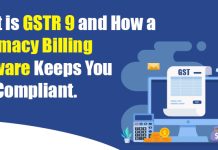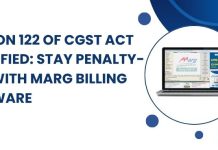Goods and Services Tax (GST) is a tax levied on the supply of goods and services in India. It was introduced in July 2017 to simplify the taxation system and bring uniformity in the taxation structure across the country. GST has several provisions that businesses need to comply with, including GST reversal.
GST reversal is a process that involves the reversal of input tax credit (ITC) that has been claimed by businesses. It typically happens when the goods or services on which ITC has been claimed are returned, canceled, or not utilized for the intended purpose. GST reversal is a crucial concept that businesses must understand to ensure compliance with the GST law. Let’s dive deeper into the topic to understand it better.
When is GST Reversal Required?
GST reversal is required in the following scenarios:
- Goods or services are returned: If the goods or services on which ITC has been claimed are returned to the supplier, GST reversal is required. The supplier needs to issue a credit note to the recipient, and the recipient needs to reverse the ITC claimed on the original invoice.
- Goods or services are not utilized for the intended purpose: If the goods or services on which ITC has been claimed are not used for the intended purpose, GST reversal is required. For example, if a business purchases a car for business purposes but later uses it for personal use, GST reversal is required.
- Invoice is not paid within 180 days: If the recipient of goods or services does not pay the supplier within 180 days, the ITC claimed by the recipient will be reversed. The supplier can claim the ITC again once the payment is made.
- Tax rate is reduced: If the tax rate on the goods or services is reduced, the ITC claimed on the higher tax rate needs to be reversed. For example, if the tax rate on a particular item is reduced from 18% to 12%, the ITC claimed on the 18% tax rate needs to be reversed.
How to Reverse GST ITC?
To reverse GST ITC, businesses need to follow the below steps:
- Issue a debit note: The recipient needs to issue a debit note to the supplier for the amount to be reversed. The debit note should include details such as the original invoice number, the date of the invoice, and the amount to be reversed.
- Reverse the ITC claimed: The recipient needs to reverse the ITC claimed on the original invoice and reduce the ITC balance accordingly.
- Submit the details in the GST returns: The recipient needs to submit the details of the GST reversal in their GST returns for the respective period.
Conclusion
GST reversal is an essential concept that businesses must understand to ensure compliance with the GST law. It is crucial to keep track of the goods and services on which ITC has been claimed and ensure that the ITC is reversed whenever required. Failing to do so can result in penalties and interest under the GST law. Therefore, businesses must stay updated with the GST law and comply with its provisions to avoid any legal complications.
Read more useful content:
- GST Rules and Regulations in India
- GST Software
- GST Billing Software
- Billing Software
- GST on diamonds
- Making GST Payments
- GST E-invoice
Frequently Asked Questions (FAQs)
What is GST reversal?
GST reversal is the process of reversing the input tax credit (ITC) that has been claimed by businesses. It typically happens when the goods or services on which ITC has been claimed are returned, canceled, or not utilized for the intended purpose.
When is GST reversal required?
GST reversal is required in several scenarios, including when goods or services are returned, not utilized for the intended purpose, invoice is not paid within 180 days, or tax rate is reduced.
How do I reverse GST ITC?
To reverse GST ITC, businesses need to issue a debit note to the supplier for the amount to be reversed, reverse the ITC claimed on the original invoice, and submit the details of the GST reversal in their GST returns for the respective period.
Is GST reversal mandatory?
Yes, GST reversal is mandatory under certain circumstances, as specified under the GST law. Failure to comply with the GST reversal provisions can result in penalties and interest.
Can I claim the reversed ITC again?
In some cases, businesses can claim the reversed ITC again, such as when the goods or services are re-purchased or used for the intended purpose. However, businesses need to ensure that they comply with the GST law and the specific provisions related to ITC reversal.
What are the consequences of non-compliance with GST reversal provisions?
Non-compliance with GST reversal provisions can result in penalties and interest under the GST law. Additionally, businesses may face legal complications and difficulties in getting their GST registrations renewed or canceled.
Can GST reversal be done for partial quantities of goods or services?
Yes, GST reversal can be done for partial quantities of goods or services, as long as it complies with the GST law and the specific provisions related to ITC reversal.
Do I need to issue a credit note for GST reversal?
No, a credit note is not required for GST reversal. Instead, businesses need to issue a debit note to the supplier for the amount to be reversed.
Is GST reversal applicable for both CGST and SGST?
Yes, GST reversal is applicable for both CGST and SGST. Businesses need to comply with the specific provisions related to ITC reversal under the GST law for both CGST and SGST.
Can GST reversal be done for exempted goods or services?
No, GST reversal cannot be done for exempted goods or services as ITC cannot be claimed on such supplies under the GST law.






